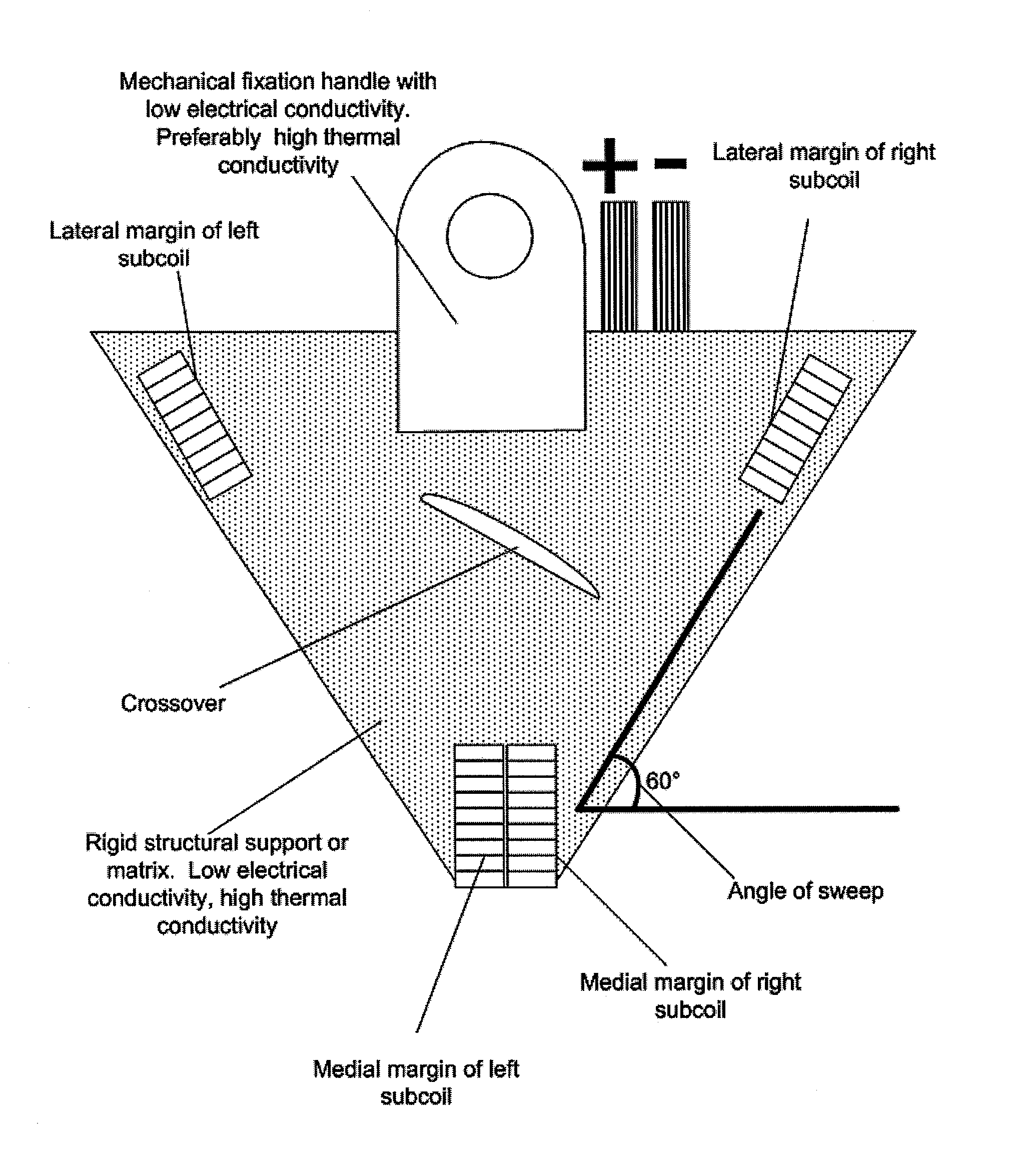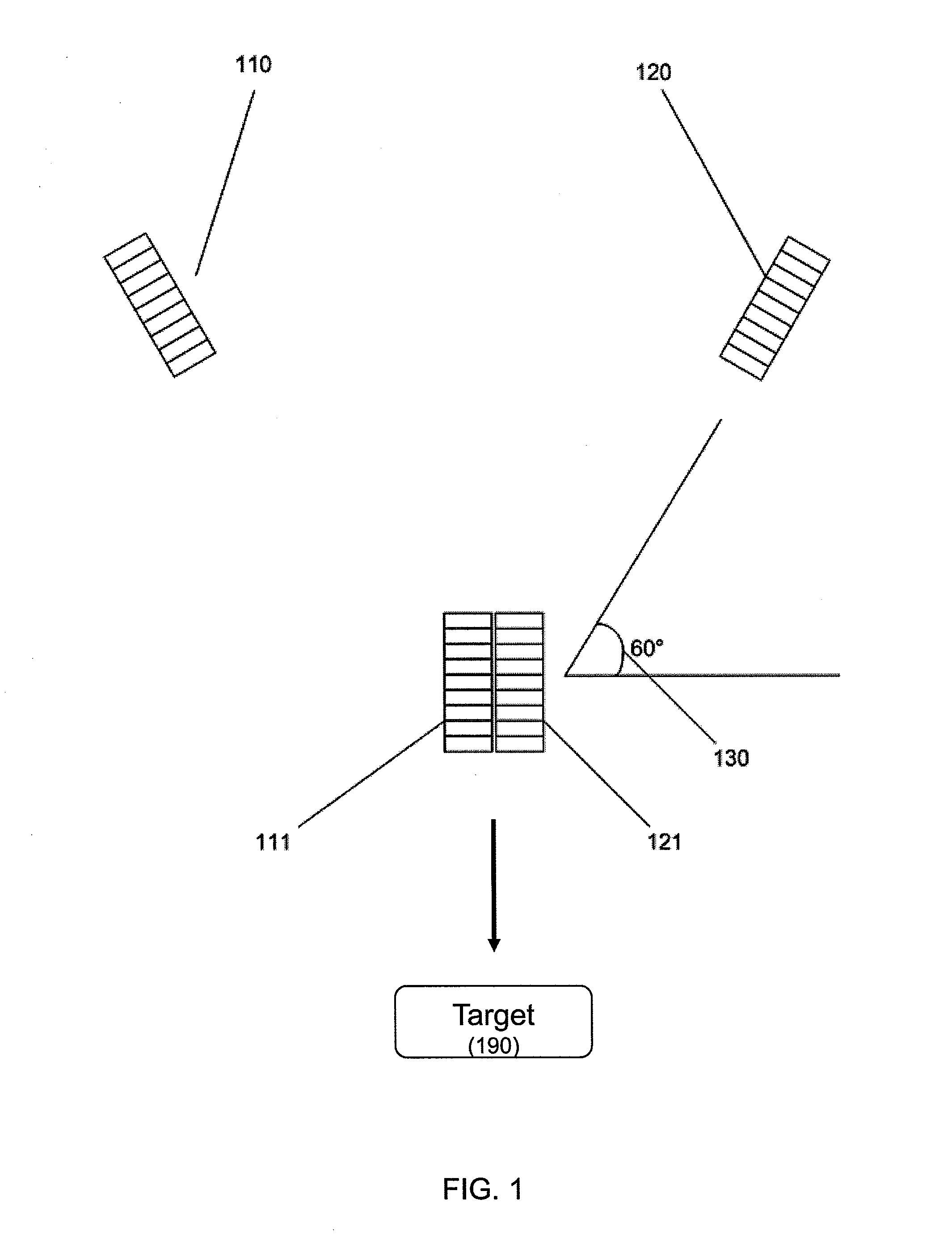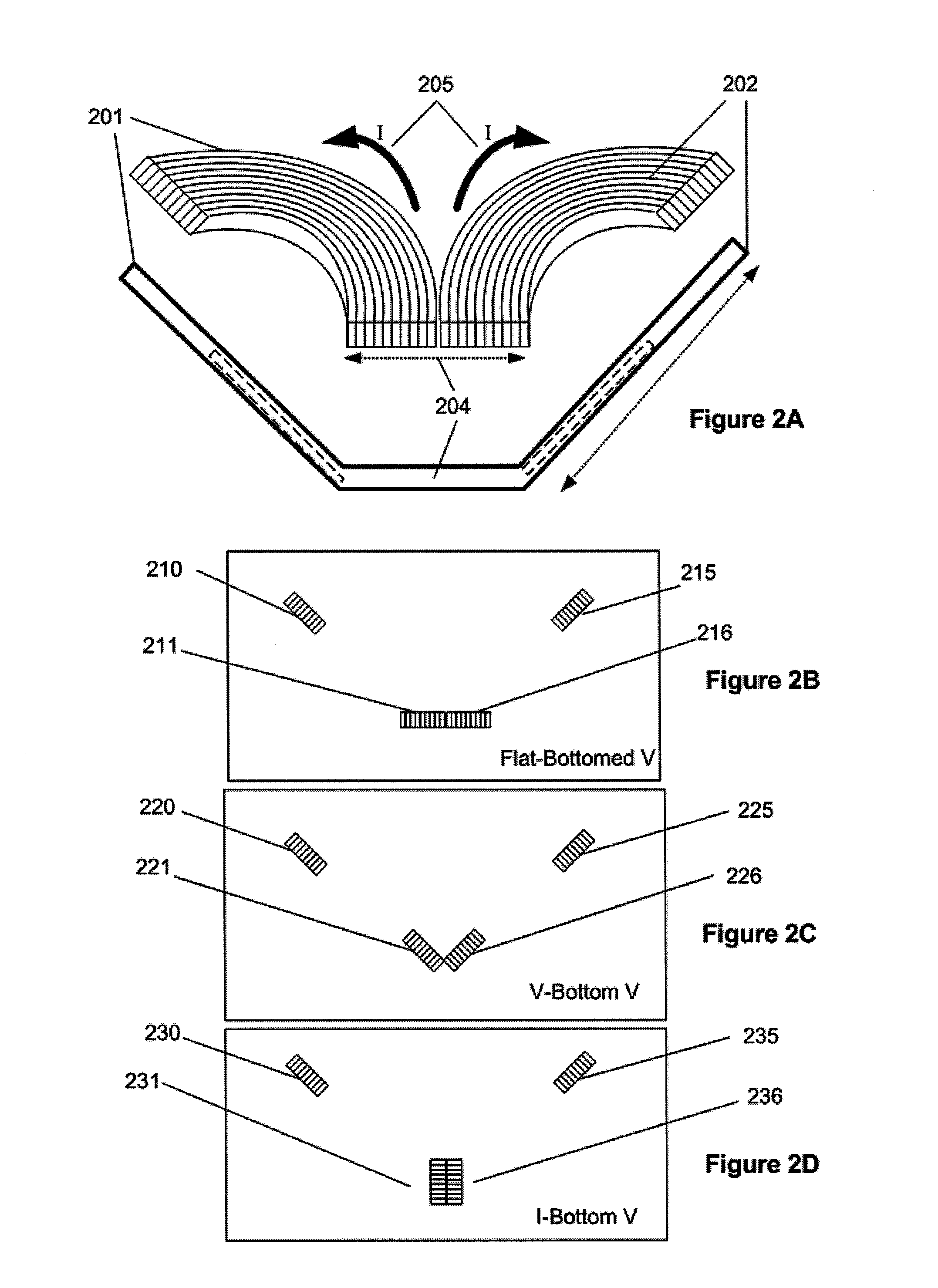Shaped coils for transcranial magnetic stimulation
a transcranial magnetic stimulation and coil technology, applied in the direction of coils, basic electric elements, therapy, etc., can solve the problems of limited depth and shape of emitted field, difficult to achieve focal brain stimulation at the cortical surface, and unoptimized magnetic field projected from standard figure-8 shaped double coil electromagnets, etc., to achieve superior magnetic field profiles and improve penetration to depth
- Summary
- Abstract
- Description
- Claims
- Application Information
AI Technical Summary
Problems solved by technology
Method used
Image
Examples
Embodiment Construction
[0036]In general, the TMS magnets described herein may be referred to as shaped-coil TMS magnets. A shaped-coil TMS magnet typically includes a pair of coils (each having multiple windings) that have a non-flat shape and are connected to each other at a vertex region or point. A shaped coil may have a bent or curved ring shape. The shaped coils described herein may also be referred to as “V-shaped” coils.
[0037]Prior art TMS magnets having a two coils were typically “flat,” forming a “figure-8” shape. The shaped-coil TMS magnets described herein generally have two coils that are at an angle with each other that is less than 180 degrees (an angle of 180 degrees corresponds to the standard “figure-8” shaped coils), and an angle with respect to a horizontal plane that is greater than zero (e.g., a standard “figure-8” shaped coil has an angle of 0 degrees with respect to the horizontal). The vertex region, which may also be referred to as the ‘bottom’ of the shaped coil pairs, may be fla...
PUM
| Property | Measurement | Unit |
|---|---|---|
| angle | aaaaa | aaaaa |
| angle | aaaaa | aaaaa |
| angle | aaaaa | aaaaa |
Abstract
Description
Claims
Application Information
 Login to View More
Login to View More - R&D
- Intellectual Property
- Life Sciences
- Materials
- Tech Scout
- Unparalleled Data Quality
- Higher Quality Content
- 60% Fewer Hallucinations
Browse by: Latest US Patents, China's latest patents, Technical Efficacy Thesaurus, Application Domain, Technology Topic, Popular Technical Reports.
© 2025 PatSnap. All rights reserved.Legal|Privacy policy|Modern Slavery Act Transparency Statement|Sitemap|About US| Contact US: help@patsnap.com



